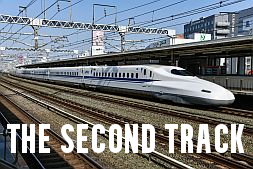Taxing the poor to pay for teeth
John.Humphreys | August 4, 2009
Raising the Medicare levy to fund Denticare could place a disproportionate burden on low income earners.
In the middle of a global recession, the government is considering a regressive increase in income tax.
Specifically, they want to increase the marginal tax rate by 8.5 percent for low-income workers and by 0.75 percent for everybody else.
As bad as that sounds, the really scary part is that they probably don’t even know that this is what they are considering. The tax system in this country is so distorted and misreported that even the government seems ignorant of how it works.
On Monday the National Health and Hospitals Reform Commission announced a range of policy options to centralise control of health. Among these was a proposal for a Commonwealth funded dental health scheme dubbed ‘Denticare’, funded by an increase in the Medicare Levy of 0.75 percent.
What the report doesn’t say is how this suggestion will impact on low-income workers.
The Medicare Levy is nothing more than a friendly sounding income tax. Despite the name, there is no link with health spending. But the sting in the tail of the Medicare Levy is that it is a regressive income tax, with some low-income earners paying a higher marginal tax rate than high-income earners.
With the current rate, people earning an annual income of between $17,794 and $20,934 pay the Medicare Levy at a marginal rate of 10 percent, while people earning over $20,934 have a marginal rate of 1.5 percent. The government defends the 10 percent bracket as a “phase in” of the Medicare Levy.
With the proposed increase in the Medicare Levy, the 10 percent bracket will expand to cover people earning up to $22,960 per year. That means that people earning between roughly $21,000 and $23,000 per year will see their marginal tax rate increase by 8.5 percent.
Ironically, this regressive reform has been proposed in the name of equity.
For a low-income worker the story gets worse. In addition to a 10 percent Medicare Levy they are paying 15 percent through the other income tax and may be losing their welfare benefits at 60 percent. This all adds up to an effective marginal tax rate of 85 percent, which means that a low-income worker who earned an extra $100 would have to pass $85 to the government.
The government shouldn’t be increasing the marginal tax rates for the poor. If anything, they should be decreasing them.
It is hard to imagine a group of policy wonks putting together a plan to intentionally punish low-income workers. It is more likely that they simply didn’t understand the consequences of their proposal.
This highlights the fundamental problem in our tax-welfare system, where the complexity of the 125 different taxes and about 40 cash transfer payments, each with different rules, combine to hide anomalies and prevent much needed reform.
The government is right to be re-thinking our health system. But instead of increasing taxes on low-income workers the government should instead be looking at structural reform that makes the system sustainable.
John Humphreys is a Research Fellow with the Economics Programme at the Centre for Independent Studies. He previously worked as a policy analyst for the Commonwealth Treasury and as a consultant for the Centre for International Economics. He is also the Director of the Human Capital Project, a non-profit that provides financing to Cambodian university students. John has an Economics (Hons) degree from the University of Queensland.
SHARE WITH:








Daniel Filan
August 10, 2009 at 11:58 pm
Fascinating
This post really highlights how convoluted Australia’s tax system is. Surely simplification of this system should be one of the government’s priorities? After all, effective reform can only take place when people know what they’re dealing with, and it seems that in the case of tax, people just don’t.